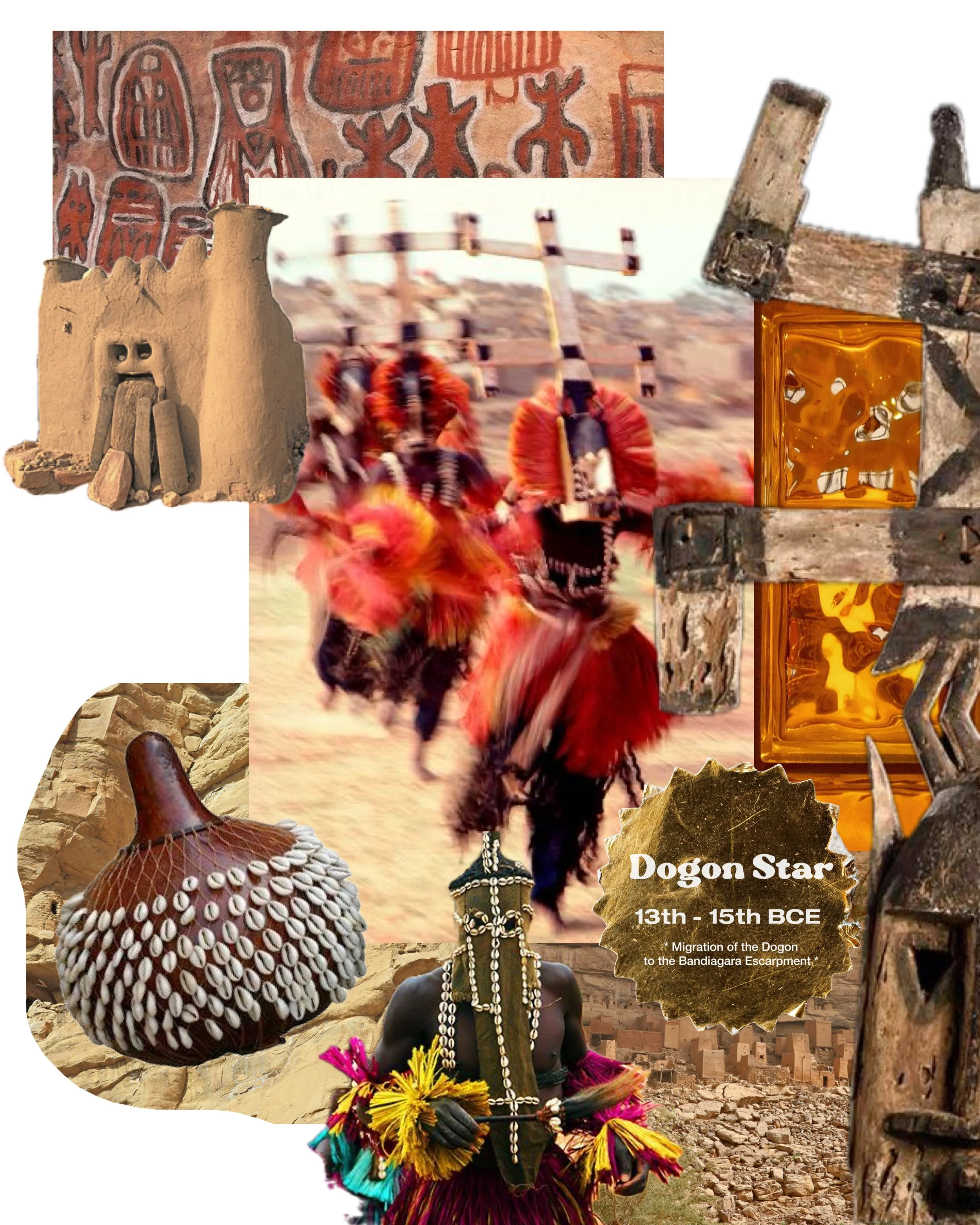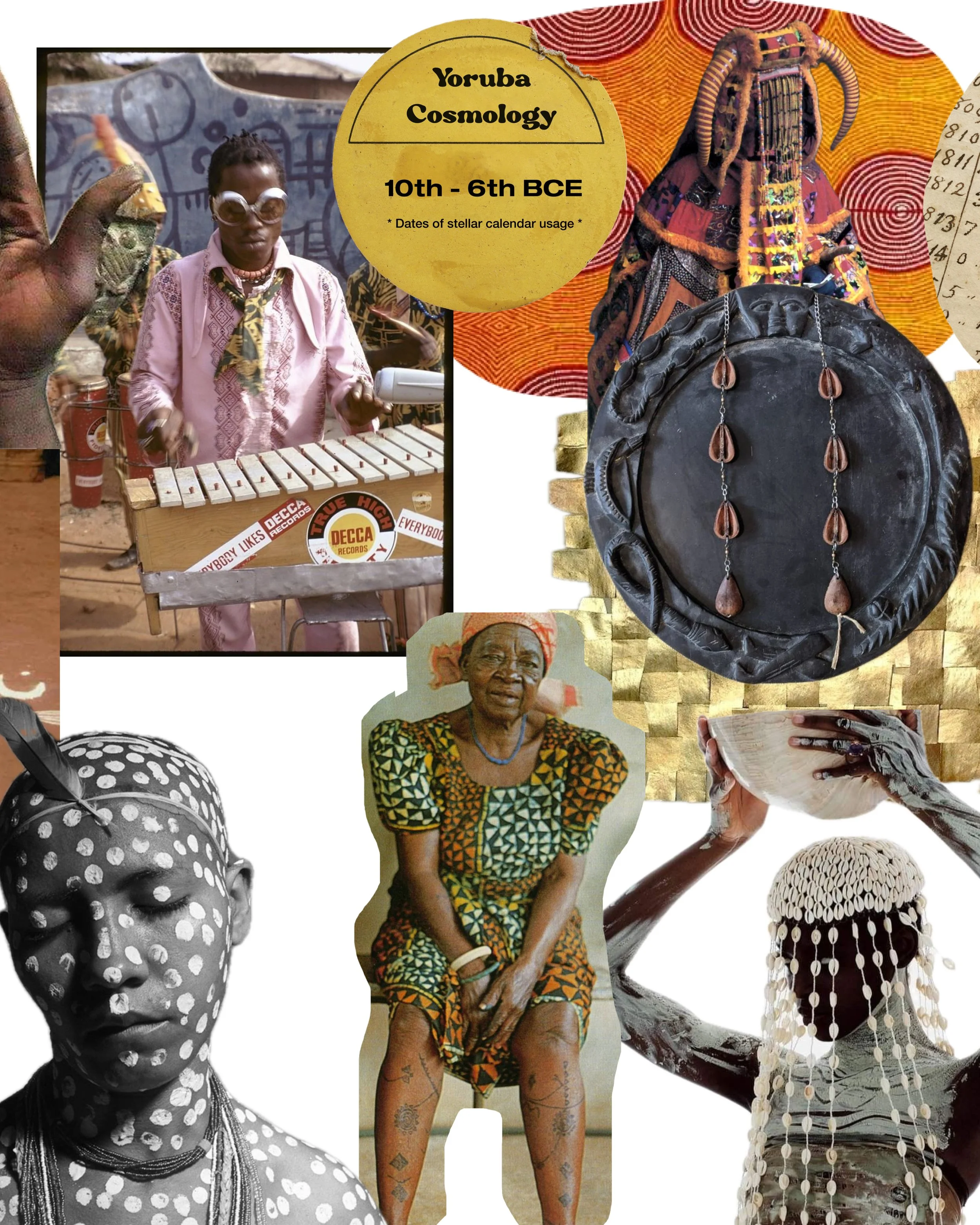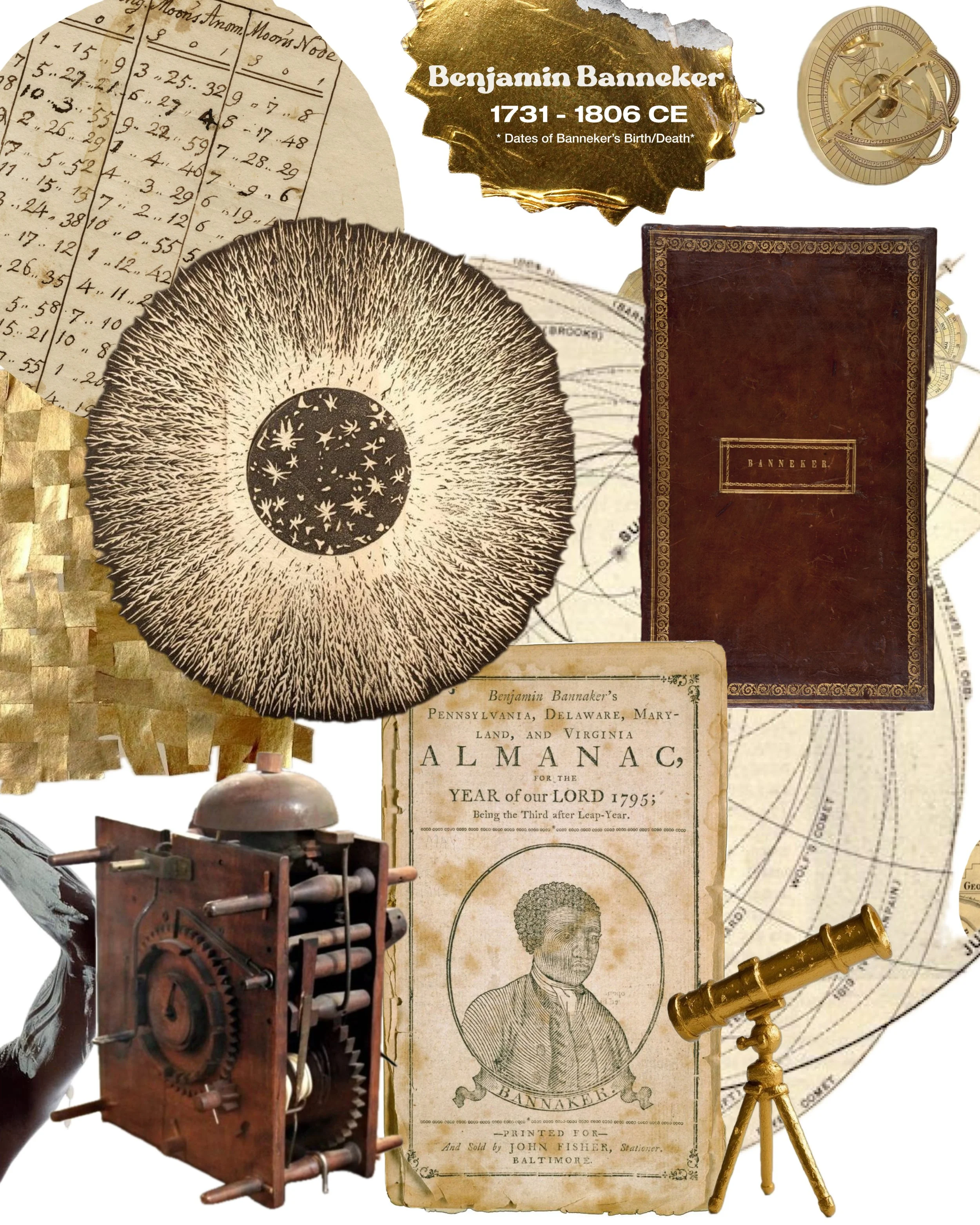We Are The Stars
We come from the stars. It is not unbelievable that our ancestors would use the stars to guide them to freedom and liberation. Astrology has become a trendy topic, but what people often do not know or deny is how intrinsically it is connected to the Black diaspora. From ancient civilizations in Africa to the Underground Railroad, celestial bodies have been used for navigation, spiritual enlightenment, and revolutionary action. The relationship between Black people and the cosmos is deeply embedded in history, myth, and lived experience, making astrology more than just a passing fascination—it is an ancestral inheritance.
The Dogon Star
Thousands of years ago, the Dogon people of Mali observed one of the brightest stars in the night sky, Sigi Tolo. They believed it had two companion stars, Pō Tolo and the allegedly non-perceptible Emme Ya Tolo. Essentially, the Dogon people discovered a multi-star system and celebrated Pō Tolo’s orbit around Sigi Tolo every 60 years at the region-wide Sigi Festival. What is particularly astonishing about their knowledge is that modern science only confirmed the existence of Sirius B, the companion star to Sirius A (which aligns with Sigi Tolo), in the 20th century, long after the Dogon had already documented its cycle.
The Dogon villages were formed by a mass exodus of diverse ethnic groups fleeing persecution after the fall of the Mali Empire. Seeking to preserve their indigenous traditions, they settled in the Bandiagara Escarpment in the 14th century. This sandstone cliff spans 90 miles wide and 1,600 feet tall in modern-day Mali and Burkina Faso, creating a natural fortress that allowed them to safeguard their sacred knowledge.
The Dogon people have known about multi-star systems, genetics, and cosmology before modern science and the invention of telescopes or microscopes. According to Dogon elder Ogotemmêli, the Nommo were amphibious serpentine shape-shifters who descended from the sky into the ocean with a thunderous flying vessel. These celestial beings, described as both guides and ancestors, brought knowledge of the cosmos to the Dogon people. Their reverence for the cycle of stars led them to designate genders to celestial phenomena: white dwarfs, neutron stars, and black holes were considered masculine, while main sequence stars and red giants were feminine. This binary perspective reflected their deep understanding of the regenerative processes of the universe.
The Sigi Festival, occurring every 60 years, symbolizes the death of the first ancestor and humanity’s acquisition of spoken language. The ceremony involves intricate mask dances and a secret language, Sigui So, which is forbidden for women to learn. The Dogon’s deep celestial knowledge, passed down for centuries without telescopes or written texts, highlights their extraordinary spiritual and scientific legacy. Their understanding of the red giant star Po Pilu, which they depicted with a red calabash, further ties their cosmology to the idea of stellar birth and death cycles, aligning with modern astrophysical theories about star formation and nebulae.
Yoruba People & Cosmology
The Yoruba Ifa tradition does not use the Western zodiac system, but it has its own classification system based on the Odu Ifa, sacred verses that determine a person’s destiny. Each person is born with a guiding Orisa (spirit), which provides protection and wisdom. Scholars have drawn parallels between the Odu Ifa and astrological houses, suggesting a deeper cosmic alignment. The Orisa function similarly to planetary archetypes, with each one ruling different aspects of human life, emotions, and purpose.
Africans of the Nile Valley and Great Lakes region developed a stellar calendar between 10,000 and 6,000 BCE, later transitioning to a solar calendar around 4,000 BCE. The alignment of celestial bodies influenced their culture, inspiring monolithic structures that continue to awe modern architects. These early Africans tracked the movements of celestial bodies with such precision that they influenced the development of later astronomical systems worldwide, from the Mayans to the Mesopotamians.
Yoruba spirituality acknowledges Olodumare as the supreme creator and recognizes 400 Orisha, each representing natural forces and celestial influences. The divination board used in Ifa, Opan Ifa, resembles an astrological birth chart, both divided into twelve houses corresponding to life’s various aspects. The traditional Yoruba belief system holds that everything within nature, including plants, animals, and minerals, possesses consciousness. The Orisha correspond to celestial energies, mirroring the planetary movements observed in astrology.
Benjamin Banneker
Benjamin Banneker (1731-1806) was a self-taught Black astronomer, mathematician, and surveyor who created one of the first American almanacs and accurately predicted solar eclipses. He assisted in surveying Washington, D.C.,[He used celestial calculations to assist in surveying Washington, D.C. Much like the Egyptians did in building pyramids that aligned with constellations and celestial events] and despite facing racism, his scientific achievements challenged perceptions of Black intellectual capability.
Banneker, said to be a descendant of the Dogon people, documented planetary movements, eclipses, and weather patterns. His correspondence with Thomas Jefferson, in which he argued for racial equality, highlights his activism alongside his scientific pursuits. His almanacs were groundbreaking, containing astronomical tables, tide charts, and farming schedules, all based on his meticulous observations of the heavens.
Only one of Banneker’s journals survived a fire on the day of his funeral. This journal contained notes on celestial events, interactions with neighbors, and even dream interpretations. His work stands as a testament to the long lineage of Black astronomers and scientists who used their knowledge of the stars to benefit humanity.
Nat Turner
In August 1831, Nat Turner led a rebellion in Southampton, Virginia, after witnessing a solar eclipse that he interpreted as a divine sign. He believed celestial events were messages from his ancestors, urging him to fight for freedom. His uprising, though ultimately suppressed, marked a significant moment in American history and reinforced the connection between the Black diaspora and celestial guidance.
Turner’s spiritual interpretation of the eclipse was deeply tied to African traditions where cosmic phenomena were seen as omens. The rebellion he led sent shockwaves through the South, inspiring both fear and resistance, proving that the heavens had always played a role in guiding liberation movements.
Harriet Tubman and the North Star
Harriet Tubman (1822 - 1913), as a conductor of the Underground Railroad, used the North Star (Polaris) to lead enslaved people to freedom. Polaris remains fixed in the night sky, providing a constant reference point for navigation. Her use of astronomical knowledge exemplifies how celestial movements have guided Black liberation efforts.
She understood that the North Star was the key to escaping the brutality of slavery, using it to navigate through forests, rivers, and treacherous landscapes. This knowledge, passed down through generations, reaffirmed the long-standing relationship between African-descended peoples and the stars.
Astrology Today and the Diaspora’s Influence
Today, astrology has resurged as a popular cultural phenomenon, but its African roots remain largely unacknowledged. The influence of African cosmology extends into modern astrology, from the significance of celestial alignments in Ifa to the ways in which figures like Banneker, Turner, and Tubman used the stars for guidance and liberation.
The Black diaspora’s connection to astrology is not a trend but a deep, ancestral practice—one that has long shaped spiritual, cultural, and historical narratives. Unlike the westernized form of astrology, which is often used as a fortune-telling tool to predict individual and collective energetic shifts, ancestral astrology was deeply intertwined with astronomy. Our ancestors used it to understand the cycles, movements, seasonal patterns, and symbolic meanings of constellations, allowing them to navigate the natural world with intention. This knowledge guided agriculture, architecture, rituals, and migration, reinforcing a sacred connection to the cosmos. As we explore the stars today, we are also rediscovering the wisdom of those who came before us, reaffirming that we have always been one with the universe.
This blog post is a collaboration between Aquarius Mood and We The Diaspora.
Artwork created by Djenabé





